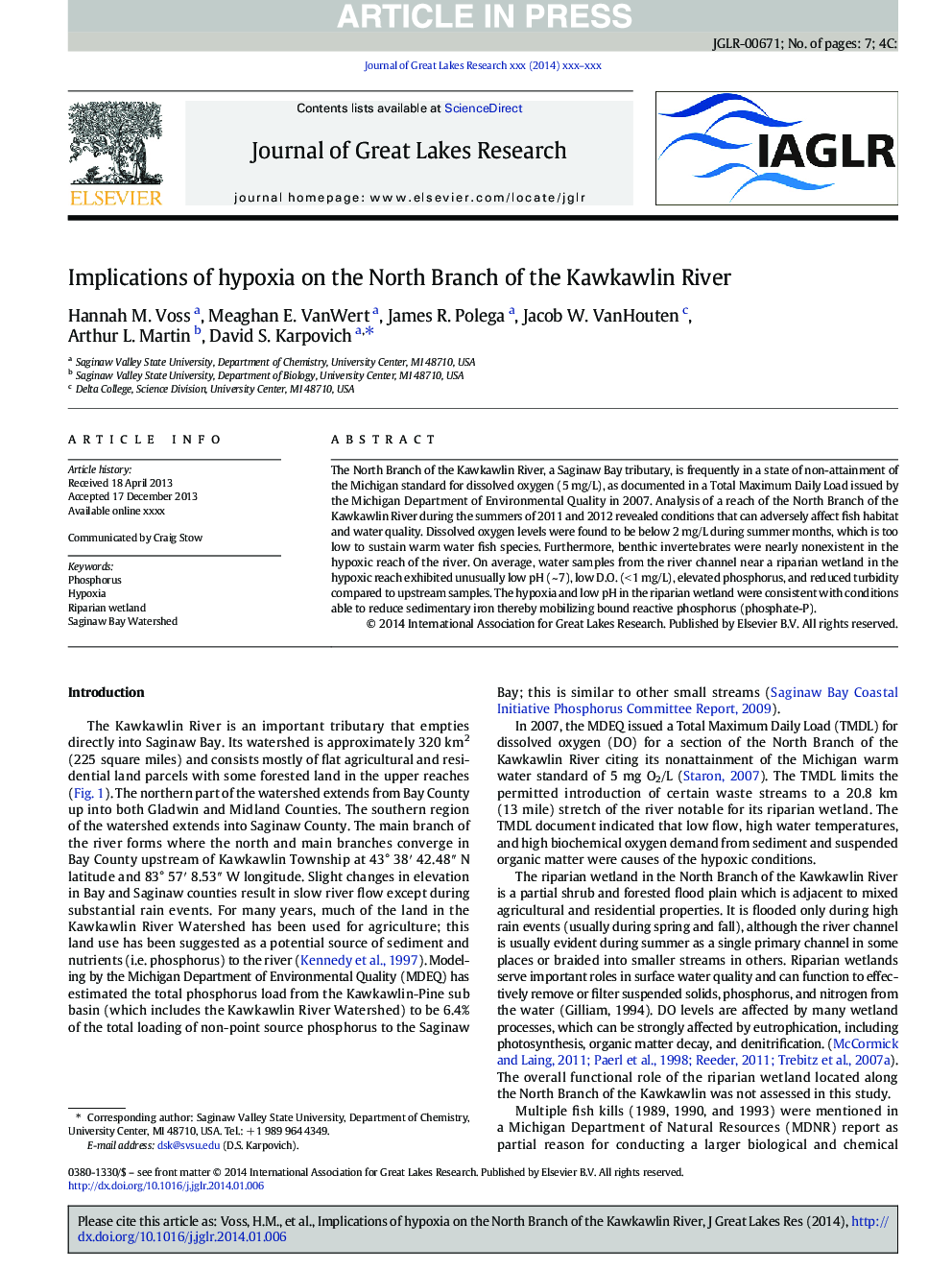| Article ID | Journal | Published Year | Pages | File Type |
|---|---|---|---|---|
| 4398379 | Journal of Great Lakes Research | 2014 | 7 Pages |
Abstract
The North Branch of the Kawkawlin River, a Saginaw Bay tributary, is frequently in a state of non-attainment of the Michigan standard for dissolved oxygen (5Â mg/L), as documented in a Total Maximum Daily Load issued by the Michigan Department of Environmental Quality in 2007. Analysis of a reach of the North Branch of the Kawkawlin River during the summers of 2011 and 2012 revealed conditions that can adversely affect fish habitat and water quality. Dissolved oxygen levels were found to be below 2Â mg/L during summer months, which is too low to sustain warm water fish species. Furthermore, benthic invertebrates were nearly nonexistent in the hypoxic reach of the river. On average, water samples from the river channel near a riparian wetland in the hypoxic reach exhibited unusually low pH (~Â 7), low D.O. (<Â 1Â mg/L), elevated phosphorus, and reduced turbidity compared to upstream samples. The hypoxia and low pH in the riparian wetland were consistent with conditions able to reduce sedimentary iron thereby mobilizing bound reactive phosphorus (phosphate-P).
Keywords
Related Topics
Physical Sciences and Engineering
Earth and Planetary Sciences
Earth and Planetary Sciences (General)
Authors
Hannah M. Voss, Meaghan E. VanWert, James R. Polega, Jacob W. VanHouten, Arthur L. Martin, David S. Karpovich,
